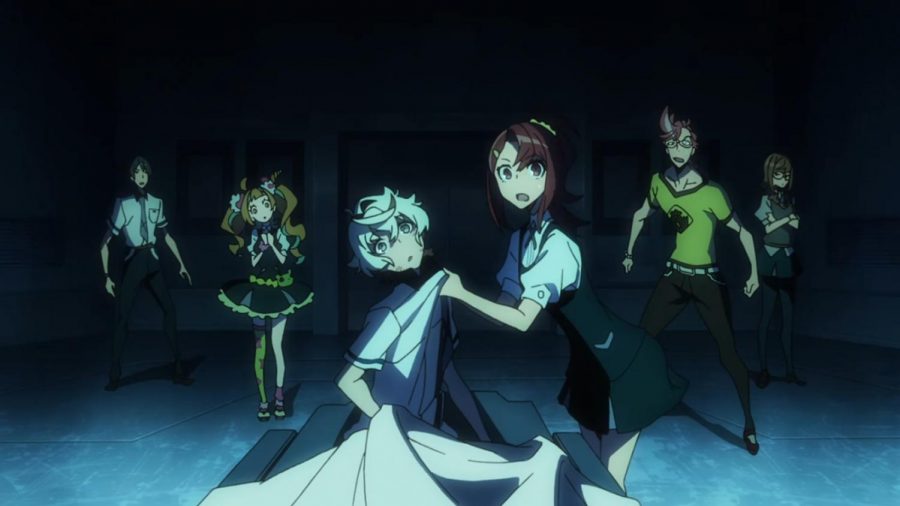The scars we carry: a “Kiznaiver” review
Studio TRIGGER’s anime about teens connected through pain is a riveting dissection of youth and the conflicting emotions it brings.
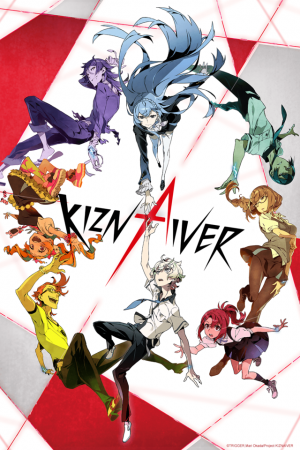
Making friends is hard. Call that the greatest understatement of all time, but if you think about it, difficulty in that field does exist. Even now as a high school senior, I still feel like I’m not close with the people I consider my friends. I’m also afraid they don’t consider me their friends at all. Add to that the drama that comes with changing relationships and growing up, and to those who say friendship isn’t complicated, thank you for lying.
This is especially true for people who appear to have nothing in common. Forcing them to get along is near impossible unless there really is something they share. Maybe it’s an interest in the same sports team. Perhaps they all like to read. Or maybe they’re all invested in the same TV show.
But if nothing connects, you could do what this show presents: have them all be bound by their wounds. It may turn out fascinating.
Written by prolific writer Mari Okada and brought to life by Studio TRIGGER, “Kiznaiver” definitely falls into that magical category. Pitched as “The Breakfast Club” meets “Sense8,” the show throws seven colorful teens into the depths of an experiment that has people feel each other’s pain as a way to achieve world peace. A messed-up idea, sure, but the series is about more than just the test. It’s about the kids coming together and reaching a semblance of friendship while trying to navigate the ups and downs of growing up. It’s a character-focused melodrama that perfectly reflects the struggles of being young. It may go about it in an overly articulate way, but the emotions are raw and unflinchingly honest.
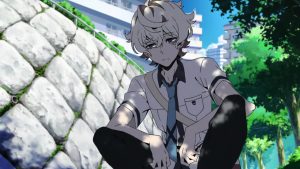
At the center of this anime is Katsuhira Agata, a high school student who has lost his ability to feel pain. This makes him the constant target of bullies who exploit this fact, yet he seems indifferent to the whole thing. One day, after being saved by a guy in his class and getting knocked out, he runs into another classmate on the school roof. Her name is Noriko Sonozaki, and she seems just as disconnected as Katsuhira is. She explains the Seven Deadly Sins have taken on new forms in modern day Japan and classifies him as “Moron” due to his sloth-like tendencies.
From there, she pushes him down the stairs and brings more of his classmates into the ring: the boy who got him out of the rough situation earlier in the day, his childhood friend, the class flirt, the girl who believes in fairies, the aloof student and the elusive loner who enjoys the experience more than the others. All become connected via their wounds, gain a scar on their right wrists and are forced into completing missions to reach the goal of the Kizna System. But even though they grow accustomed to their link, things start going haywire. How much are they willing to share? Can they hurt beyond physical wounds?
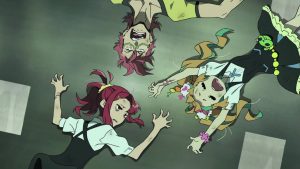
These questions are anchored in the characters, which go beyond the development of the Kizna experiment and are the highlight of the show. All of them are dynamic, larger than life and realistic. They all go through their own struggles over the course of the series and develop into bigger people than how they started. By the end of the show’s run, they may even become your friends.
To help showcase these characters is vibrant animation. Studio TRIGGER’s work on this show is a stunning hyper-realism that calls upon the intensity of everyday life and exaggerates it. The small pockets of light that poke through leaves of a tree, the vast space of a girl crouching alone in a barely lit room and the weird little faces people make when shocked or livid with excitement are details that pop up throughout the show and enhance the experience. Adding to that is excellent use of color, perhaps the richest palette I’ve ever seen in an anime.
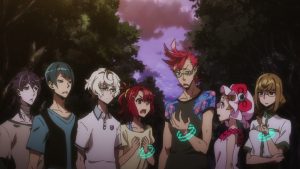
The musical score and acting is also well done. Yuki Hayashi’s mash-up of orchestral and electronic instrumentation is lush and breathtaking, perfectly highlighting the various emotions the characters go through during the show. The original Japanese is compelling and features great performances from veteran actors, but for those who prefer dubs, there’s a treat. A rare Canadian dub based in Calgary starts off endearingly awkward but grows more comfortable as it continues. The only actress I was familiar with before watching the dub was Caitlynne Medrek, who voices Chidori here. I was impressed with her performance and everyone else’s, especially Natasha Strickey’s first lead performance as Noriko and Katrina Salisbury’s first credited anime role as Nico. Some of the Japanese phrasing isn’t as effective in English, and the sexual assault jokes that pop up in one episode are still tasteless, but everything comes together to create a solid experience.
If you’re looking for snappy John Hughes-like dialogue and intense drama hiding a swell of thematic empathy, “Kiznaiver” is worth putting on your list. It’s available for streaming for free in Japanese and English on Crunchyroll, but if you’d like to own it, you must purchase the rather pricey Blu-Ray set from Aniplex. It’s worth every penny, though, and is a must for your anime collection.
Your donation will support the student journalists of West High School. Your contribution will allow us to purchase Scholarship Yearbooks, newsroom equipment and cover our annual website hosting costs.

This is Luke's first and only year as a member of West Side Story. He'll be kept busy with anchoring, editing and reporting, but he's gonna have fun while...


